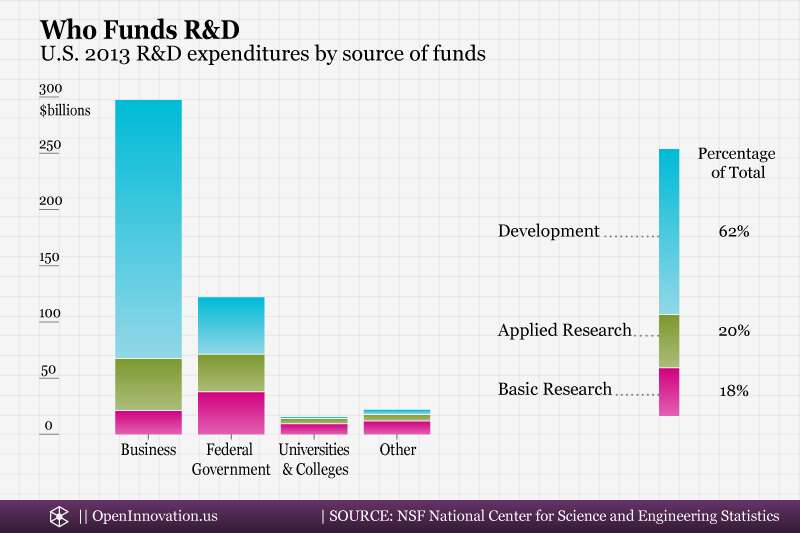
Say Yes to Joint R&D, No to Joint IP Ownership
By Nadia Carlsten | On December 03, 2015
Collaboration during technology development is undoubtedly a good thing. As costs of R&D increase and product lifecycles continue to shorten, more companies are adopting Open Innovation approaches and working together to share costs, risks, and expertise. Ideally, both parties share the fruits of joint research and development, and the arrangement benefits both sides.
The problem arises when companies don’t think through the consequences that their chosen collaboration mechanisms will create for the value of their IP. There are two common ways that joint ownership of IP can occur. The first is simply when two or more parties contribute to the creation of a patent, for example as a result of ad-hoc collaboration during research and invention activities. The second way is as the result of agreements such as strategic alliances, joint ventures, or development agreements. In both cases, joint ownership is often proposed as the easy and fair way to deal with the resulting IP. In all cases, it’s a bad idea.
Joint ownership of IP creates major legal problems that need to be considered:
- The rights of joint owners of IP don’t necessarily correspond to their respective contributions to the IP. For example, in the US, all contributors to a patent have equal rights to the entire patent:
“In the absence of any agreement to the contrary, each of the joint owners of a patent may make, use, offer to sell, or sell the patented invention within the United States, or import the patented invention into the United States, without the consent of and without accounting to the other owners.” [35USC 262] - The rules governing the use of jointly-owned IP depend on the type of IP. For example, while the joint owner of a patent can exploit it without obligations to the other owners, the joint-owner of a copyright has a duty to share the proceeds. For projects where multiple types of IP are to be expected, notably software, this is likely to lead to unwelcome levels of complexity.
- The rights of joint owners vary depending on the country. Even the definition of “joint ownership” is not consistent outside of the U.S. The European Union for example requires both “originality” and “indivisibility” of contributions. More importantly, other countries vary in their rules governing the duty of a joint-owner to require permission from other owners in exploiting the IP and in granting licenses.1
- Joint ownership may limit the ability to enforce the patent. In the U.S., all patent owners must join as plaintiffs for a patent infringement lawsuit to proceed. In Schering Corp. v. Roussel-UCLAF SA, the Federal Circuit court affirmed that “one co-owner has the right to impede the other co-owner’s ability to sue infringers by refusing to voluntarily join in such a suit.” The recent STC.UNM v. Intel again underscored the difficulties of one party (UNM) trying to enforce a patent without the participation of its joint-owner (Sandia).
In addition to the legal complexity resulting from joint-ownership, there are economic reasons why it should be avoided:
- Joint ownership makes it more difficult to reach key decisions that affect the value of IP assets. During prosecution of patents, where to file and what type(s) of protection to pursue are important questions. Similarly, when and how to enforce IP against infringers will affect the value of the created IP. Creating and maintaining optimal value is more likely if one owner is responsible for managing the asset.
- Joint ownership creates economic incentives that trigger a “race to the bottom”. Since each joint owner can exploit a patent by licensing it without permission from the others, they will each compete against the other to offer the best licensing terms, generally leading to lower prices that can be obtained for that patent.
- Joint ownership may create difficulties in monetizing IP. On the one hand, each joint owner can assign his interest in whole or in part to another, and on the other, everyone has the same rights to the IP regardless of the share of ownership. This can create situations where someone with a 1% interest in the IP can block the exploitation plans of the other 99%. This is an important concern since none of the joint-owners can grant an exclusive license without consent of the others.
- Jointly owned IP is a common property resource, and is as such vulnerable to the “tragedy of the commons”. Joint owners behaving in an opportunistic manner with regards to their share of the IP, for example entering into multiple assignments and licenses for a patent, are creating conditions that are contrary to the best interest of the owners as a group and “diluting” the patent as a resource.
Joint ownership of IP is often a result of lack of planning, or a desire to avoid the IP conversation altogether. The best way to prevent being caught in its problematic outcomes is for companies interested in collaboration and open innovation to put proper contractual agreements in place. Collaboration and development agreements should make it clear who gets what IP, dictate the assignment of future IP rights, and clarify the rights of each party to pre-existing IP that is related to the joint project.
There are several ways that companies can share in the benefits of joint research and development without owning the IP jointly. Some strategies that I recommend considering include:
- One company can be the owner of the IP rights and grant the other a royalty-free license to the IP.
- Specific IP assets can be allocated among the parties upfront based on their respective ability to exploit them, for example based on field of use or other well-defined criteria.
- A separate legal entity can be created that owns all the resulting IP and licenses it back to the contributors as necessary. This is often the best solution for complex deals where a lot of IP is expected, but a well thought-out ownership structure and governance is key to making this work.
Collaboration and joint development can lead to great results for companies. Make sure you address ownership of those results upfront.
Notes
- For example, see this guide which breaks down patent co-owners’ rights to license by country: http://ladas.com/rights-co-owners-license-patent-rights/ ^






